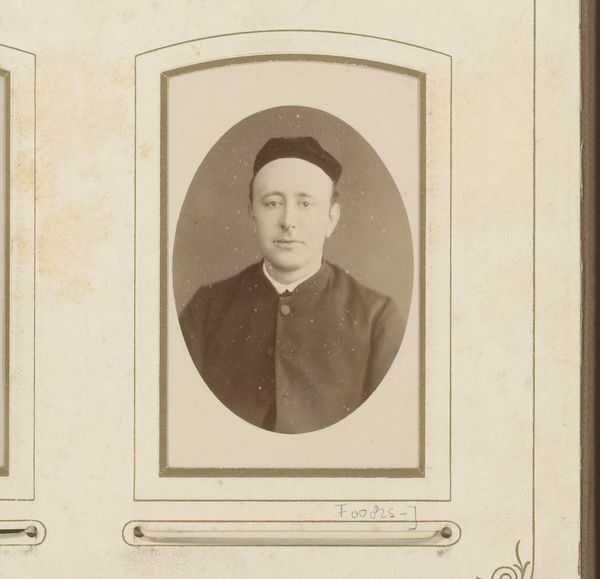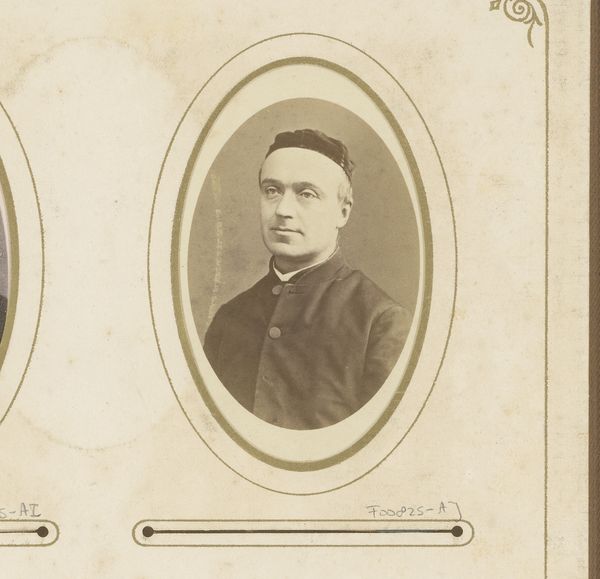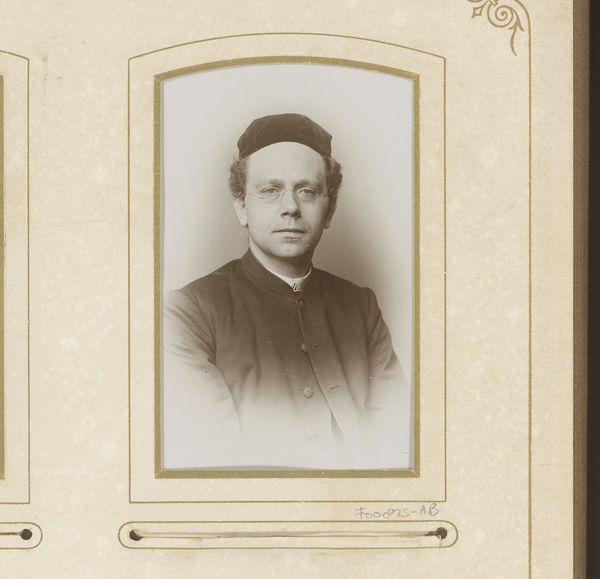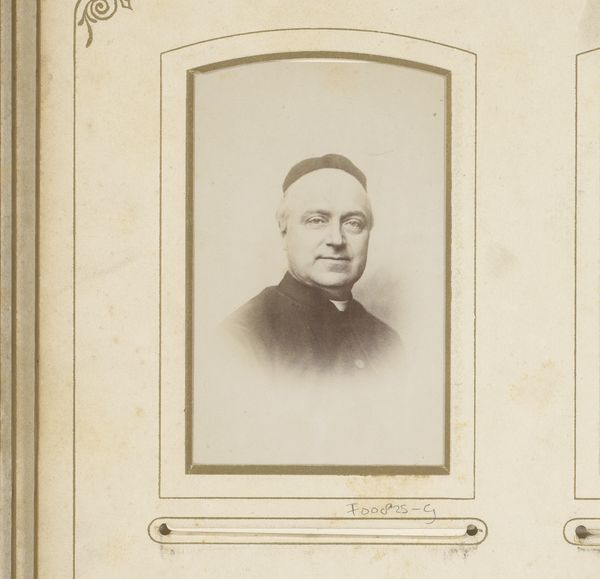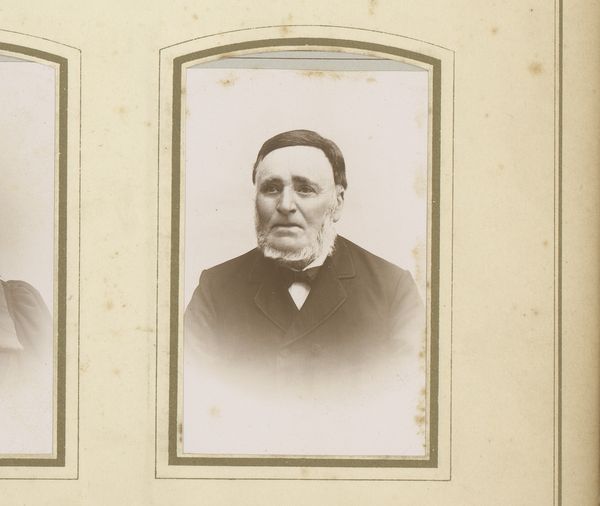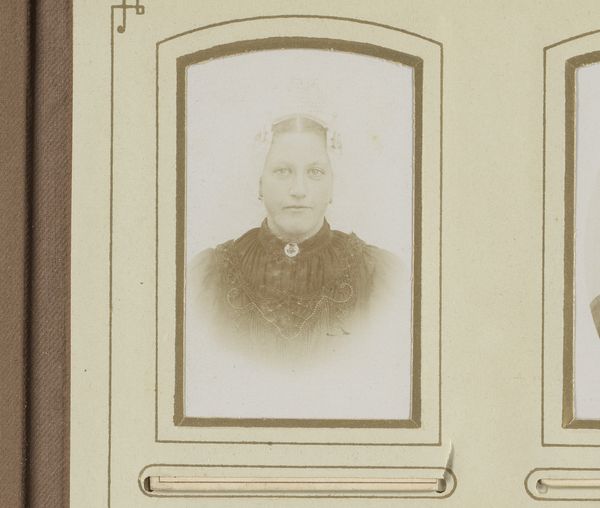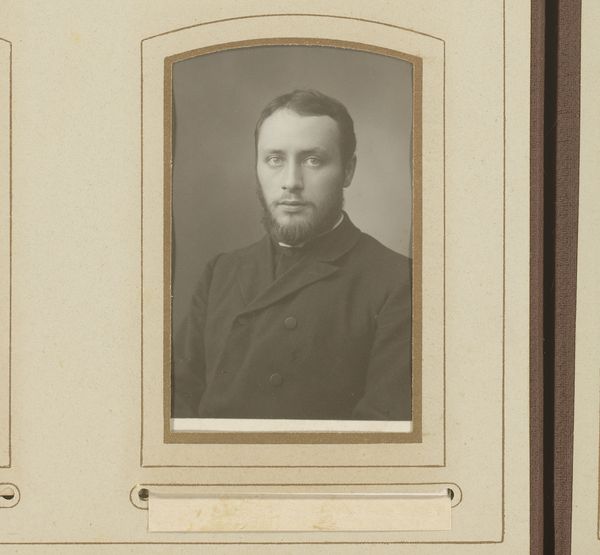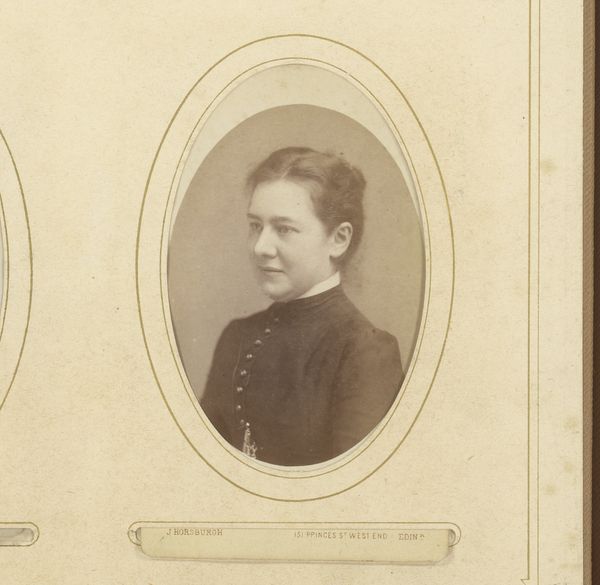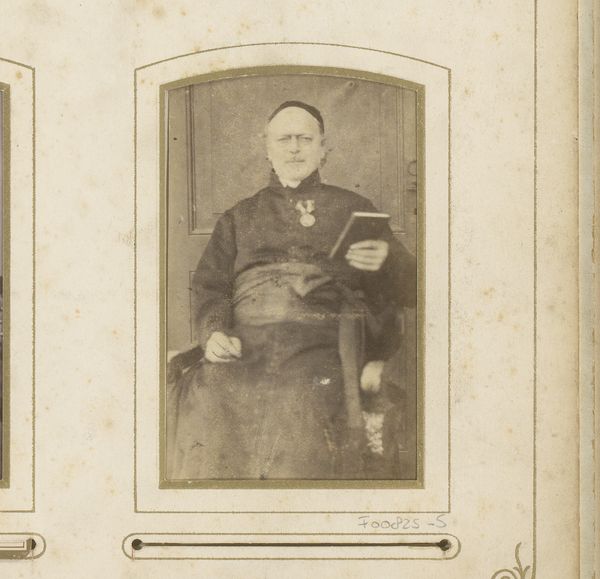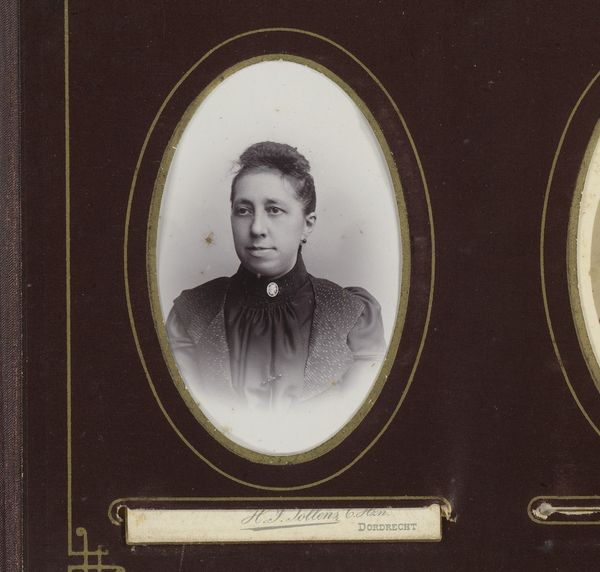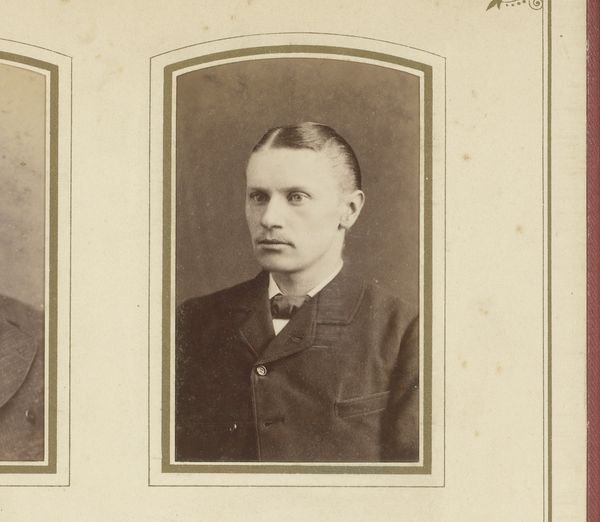
photography, gelatin-silver-print
#
portrait
#
charcoal drawing
#
photography
#
historical photography
#
gelatin-silver-print
#
19th century
#
genre-painting
Dimensions: height 86 mm, width 53 mm
Copyright: Rijks Museum: Open Domain
Editor: This gelatin silver print, "Portret van een geestelijke" or "Portrait of a Cleric" by Johannes Laurens Theodorus Huijsen, dates back to somewhere between 1863 and 1900 and resides here at the Rijksmuseum. The sepia tones give it a real sense of age, a sort of nostalgic distance. What strikes you when you look at it? Curator: Nostalgia is definitely part of it. But to me, it also evokes a profound sense of quiet contemplation. It's like glimpsing a fleeting moment of inner reflection. Do you get a sense of the sitter's personality or interior world? Editor: I think so! He looks very solemn and a little world-weary, but also dignified. I'm curious about how photography changed portraiture. Were portraits previously more idealised? Curator: Ah, that's an astute observation. Prior to photography, portraiture often aimed to present an idealized image. This photograph, though, offers a more direct and perhaps less filtered view. Do you see that hint of a weary line around his eyes, or a shadow on his brow? Photography arguably democratized portraiture by making it accessible to more people, offering a window into everyday life, while also prompting artists to explore new avenues of self-expression. Editor: So, while early portraits perhaps aimed for the aspirational, photography grounded them. It really does feel like a different era altogether. I will always remember it as a great image capturing a profound sense of humanity in a historical context! Curator: Precisely! I'll cherish it as an invaluable key to the complex interplay between faith, representation, and selfhood, and how a single photographic capture offers insight into cultural history and the depth of individual feeling.
Comments
No comments
Be the first to comment and join the conversation on the ultimate creative platform.
